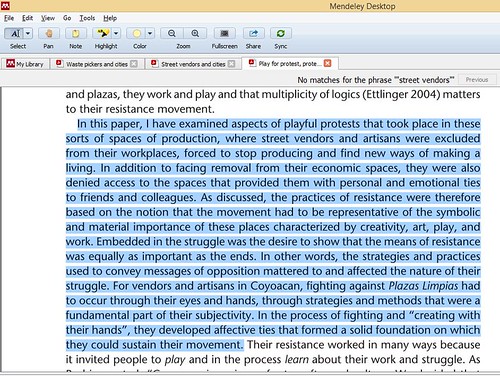It occurred to me as I was writing my blog posts on reading strategies that some people may wonder how to find the most relevant information when reading. I had tweeted about it, but I hadn’t actually written about it. So, I thought I’d write about how I work to find the most relevant information when I’m reading a paper. This applies to articles, book chapters, reports and books. I use a three-step process (and I focus on 3 main elements of a paper) which I call the AIC content extraction.
First off, while many people will recommend reading the abstract first, I don’t necessarily agree that it should be the major source of information. I have found that many abstracts are so constrained by space (100-150 words) that they rarely relay exactly the content of the paper (which ends up being much richer than the abstract posited). I think we always should read abstracts, but be somewhat skeptic of whether they will provide us with the full description of what the paper is about. I wouldn’t write a rhetorical precis based on an abstract, for example!
I do, however, expect that the introduction to a paper will tell me, by the second or third paragraph, what the paper is about. For example, below I noted that the introductory paragraph of a paper on industrial restructuring in the beer industry in Canada tells us the context and the reason for the paper.
I like this model of introduction: context, what explains phenomenon. HOWEVER, some puzzles remain. Hence this paper pic.twitter.com/GDWjcCE76u
— Dr Raul Pacheco-Vega (@raulpacheco) January 3, 2017
Note 3 explanatory elements within the paper:
- What is the context of this research? Why are the authors doing it?
- What explains the phenomenon they are studying?
- The “BUT THIS IS WHY WE’RE DOING THIS” – the WHY that explains what the paper will tackle and the reasons for it.
Some authors will provide then a detailed description of what the paper is about (methodology, research methods, data description, etc.), as shown below.
Then next paragraph explains "this paper explains X phenomenon through a study of Y and Z compared" then, data. pic.twitter.com/nrlJBkEsOH
— Dr Raul Pacheco-Vega (@raulpacheco) January 3, 2017
Other papers will provide you with a summary of Context, Rationale, Method, and Findings within the first few paragraphs, as this paper on the nexus between voluntary and non-profit research and policy studies’ scholarship by Dr. David Carter and Dr. Chris Weible shows.
.@chris_weible & @DCarterSLC offer great example on how to read/write. Paragraph 1 context, 2 what article is about pic.twitter.com/XBC7KA1L1p
— Dr Raul Pacheco-Vega (@raulpacheco) January 8, 2017
I always zoom in on the introduction because that’s where I expect that the paper authors’ will set up the entire manuscript. I look for a summary of the paper (again, looking at the context for why this research is needed, the gap in the literature, and what the contribution of the paper is).
When I read, I zoom in on paragraph 2 or 3 where authors usually tell me a summary of the paper (context, gap in literature, contribution) pic.twitter.com/WTAPU9Vqrw
— Dr Raul Pacheco-Vega (@raulpacheco) January 27, 2017
One of the suggestions that many scholars and academic writing coaches offer is that one should read at least the following elements if one is in a rush.
- The abstract.
- The introduction.
- The conclusion.
I tend to agree, which is why I suggested that this is a three elements/steps method, though in methodological papers, I tend to focus more on the actual application of the method. But I always expect that the abstract, introduction and conclusion will follow a storytelling model and that they will provide me with a broad overview of what the paper is about (this suggestion applies obviously to larger-size manuscripts, like books).
In the conclusion of a paper, I always expect to find a summary of what’s been done and how, as Dr. Veronica Crossa does in this paper on varying strategies that street vendors used in Mexico City’s Coyoacan to resist removal and eviction.
Note that Dr. Crossa summarizes the entire paper in the first few sentences of one of the concluding paragraphs, but provides additional context and insights further down.
I find that applying this three-step method (Abstract, Introduction and Conclusion) gives me at least the bare bones of an understanding of a paper. I absolutely do NOT recommend skipping the middle of the paper (methods, data, results, argument), but at least these three elements may provide a tool to decide on whether to do a detailed memorandum on the paper, whether to simply write a rhetorical precis, and what kind of information to look for throughout the paper for your Conceptual Synthesis Excel Worksheet.


When should one write precis vs a detailed memo?
I find that when one has a lot of readings to go through, a precis helps more.